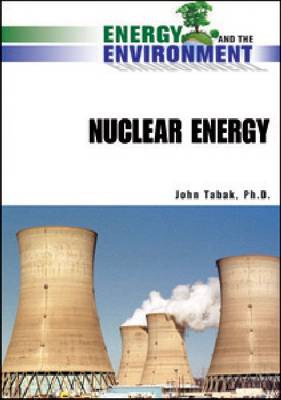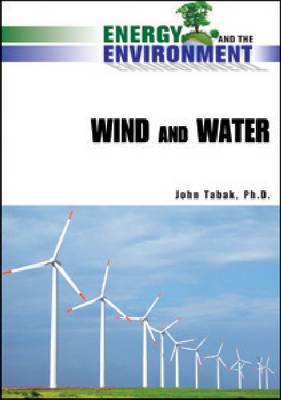Energy and the Environment
6 total works
Obtaining sufficient supplies of energy in an environmentally responsible way is one of the biggest concerns of the 21st century. Of all the problems associated with energy production, none is more complex than those associated with the production of biofuels - or non-fossil fuels derived from biomass - including plant matter, animal wastes, and municipal wastes. Obtaining enough biomass to meet demand requires large tracts of forest to be intensively managed, and it also requires agricultural resources to be diverted from the production of food and feed and toward the production of fuel. Biofuels entail their own special kind of environmental and economic disruption. There are many types of biofuels, and they are all used in different ways. They are most often used for transportation purposes, usually blended with gasoline or diesel fuel, but they are also used to generate electricity and provide heat for residential and industrial use. Biofuel consumption may be as simple as throwing a log on a fire or as complex as burning a combustible gas derived from plant matter in a combined-cycle electricity-generating unit. Biofuels describes the most common types of biofuels and biofuel technologies and seeks to identify both the advantages and disadvantages associated with their use. This new, full-color book describes the ways that biofuels are used and the technical, social, policy, and environmental consequences of large-scale consumption.
Coal and oil are two of the world's most important sources of primary energy. A multi-trillion dollar infrastructure has been created to locate, produce, transport, process, and burn coal and oil. This infrastructure has made modern life possible. In some of the world's largest economies, coal-fired power plants generate at least half of all electricity, and in almost all nations, transportation is synonymous with oil consumption. ""Coal and Oil"" describes the history of these sources of energy. The technology of coal and oil - that is, the mining of coal and the drilling for oil as well as the processing of coal and the refining of oil - are discussed in detail, as are the methods by which these primary energy sources are converted into usable working energy. Special attention is given to the environmental effects, both local and global, associated with their use and the relationships that have developed between governments and these most important industries. This comprehensive new resource also focuses on global dependence on these resources.
Solar energy and geothermal energy have a good deal in common. They are abundant and widely, if unevenly, distributed. They are two of the least environmentally disruptive sources of power available. They are also, for the most part, expensive to develop, and compared to more conventional sources of energy, relatively little power is produced from either one. ""Solar and Geothermal Energy"" describes two of the least objectionable means by which electricity is generated today. In addition to describing the nature of solar and geothermal energy and the processes by which these sources of energy can be harnessed, this accessible new book details how they are used in practice to supply electricity to the power markets. In particular, students are introduced to the difference between base load and peak power and some of the practical differences between harnessing an intermittent energy source (solar) and a source that can work virtually continuously (geothermal). Each section also contains a discussion of some of the ways that governmental policies have been used to encourage the growth of these sectors of the energy markets. An interview is included with John Farison, Director of Process Engineering for Calpine Corporation at the Geysers Geothermal Field, one of the world's largest and most productive geothermal facilities, in which he discusses some of the challenges of running and maintaining output at the facility.
Commercial nuclear power has long been one of the most controversial of all power-generating technologies, but the debate has not always been particularly informed. In order to understand the contribution that nuclear power makes today and its potential for the future, one must appreciate the various branches of physics, engineering, mathematics, economics, and the environment, as well as the way that power is supplied to the grid. It also helps to apply the same ideas and standards to the evaluation of competing technologies. Neither an endorsement nor a condemnation of nuclear power, ""Nuclear Energy"" provides objective information that is accessible - assuming only a modest knowledge of high school algebra on the part of the reader - and broad in scope. This new title discusses the physics and technology of energy production, reactor design, nuclear safety, the relationship between commercial nuclear power and nuclear proliferation, and attempts made by the United States to resolve the problem of nuclear waste disposal. It concludes by contrasting the nuclear policies of Germany, the United States, and France. Harold Denton, former Director of the Office of Nuclear Reactor Regulation at the U.S. Nuclear Regulatory Commission, is questioned about the commercial nuclear industry in the United States.
There are enormous reserves of energy in the winds and the tides and in the temperature difference between the upper and lower regions of the oceans. If the energy produced from wind and water were converted into electrical energy, it would satisfy the electricity demands of the entire world many times over. However, this kind of conversion isn't possible - not now or in the future. ""Wind and Water"" describes conventional hydropower, or wind power, and some of the newer technologies (with less certain futures) that are being introduced to harness the power of ocean currents, ocean waves, and the temperature difference between the upper and lower layers of the ocean. The strengths and limitations of each technology are discussed as well as mathematical models that describe the maximum amount of energy that can be harnessed by such devices. This comprehensive new volume also examines how these power producers benefit from government support and the economics of operating these types of generating stations. An interview with Dr. Stan Bull, former Associate Director for Science and Technology at the National Renewable Energy Laboratory, is included in which he shares his views about how scientific research is - and should be - managed, nurtured, and evaluated.
Whether solid, liquid, or gaseous, the phase of a fuel has important implications for how it can be used. In the United States approximately 20 per cent of the nation's electricity is obtained from natural gas-fired power plants, and natural gas is extremely important to residential and commercial heating markets. Hydrogen - a fuel that continues to attract a great deal of attention and research - derives its importance from the promise that it may one day be competitive with oil as a transportation fuel. ""Natural Gas and Hydrogen"" describes the technology and scale of the infrastructure that has evolved to produce, transport, and consume natural gas. It emphasizes the business of natural gas production and the energy futures markets that have evolved as vehicles for both speculation and risk management. This resource focuses on possible advantages to the adoption of hydrogen as well as the barriers that have so far prevented large-scale fuel switching. An interview with Dr. Ray Boswell of the U.S. Department of Energy's National Energy Technology Laboratory discusses his work in identifying and characterizing methane hydrate reserves, one of the most promising fields of energy research today.



